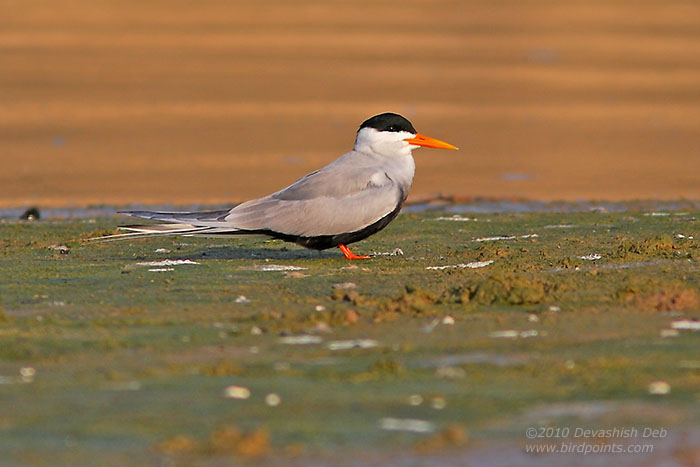|
|
| Black-bellied Tern
|
Sterna acuticauda
|
| 10
March 2010 |
|
Full
Species (monotypic); i.e. no subspecies/races
Sterna acuticauda Gray,JE 1831 |
|
|
|
Historical notes for Black-bellied Tern, Sterna acuticauda
Pls use the mousewheel to zoom in/out (Max 2X)
 A Black-bellied Tern, Sterna acuticauda, from National Chambal Wildlife Sanctuary, Uttar Pradesh, on 23 Jan 10., on a mud island favoured by the Indian Skimmer. - DD Coloration: Forehead, crown, and nape, with the sides of the head down to the lower edge of the orbit, black; very often the extreme base of the forehead is white like the lores, cheeks, chin, and throat; upper parts from nape ashy grey, slightly tinged with brown on the tertiaries, tips and parts of inner webs of primaries generally dusky, outer webs frosted and whitish; tail paler grey than the back, outer webs of outermost rectrices white; fore neck pale grey, gradually passing into chocolate, then into black on the breast; abdomen and lower tail-coverts black; wing-lining white. In winter the cap is white, streaked with black, aud the lower parts white. According to Hume the winter plumage is not assumed till December, and is only retained for about two months. Very young birds have broad buff outer and blackish inner borders to the feathers of the upper parts. Bill orange-yellow; irides blackish brown; legs and feet orange-red. Length 13; tail 5 to 6.5, depth of fork 3.5; wing 9; tarsus .55; bill from gape 1.8. Distribution: Common about rivers and tanks throughout India and Burma, but less abundant in Southern than in Northern India, and not known with certainty to occur in Ceylon, though reported to be found in the island by more than one observer. It is probable in these cases that another species has been mistaken for the present. Habits, &c: This is one of the commonest of Indian river-birds, and is generally seen flying and fishing singly or in small parties. It frequents tanks and marshes as well as rivers, and is more widely distributed. It breeds chiefly in March and April and it lays in the same situations as the Indian River-Tern, and frequently in company with it. The mode of deposition and colouring of the eggs is similar, but are smaller and more elongate, measuring on an average 1.25 by 0.95. |
About/Terms
of use etc. in the home page
Copyright ©
2006-2010 birdpoints. All rights reserved.